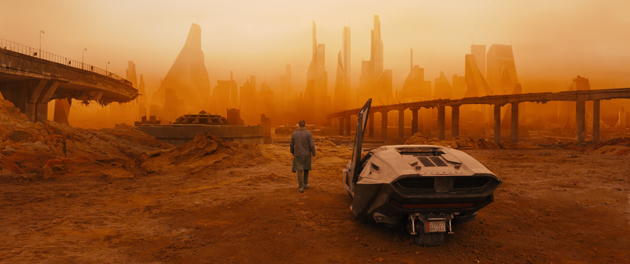Dennis Gassner

We needed to make it much harder and more robust. It’s got to be a tough-looking piece of equipment with enough strength to combat not only the rain but the snow and other elements. Extremely functional and also very beautiful at the same time. When you look at the film it actually is really beautiful but in a brutal way. Finding that balance is what I’m always looking for.
But “cracking the code” sounds like a safe thing. I call it Pattern Language. Pattern Language is an architectural term. There’s an amazing book titled A Pattern Language on creating the language of architecture. Everything is architecture to me. Any time you start to organize something that’s going to be functional that’s an architectural element. Furniture or a house. The book A Pattern Language defines creating your own visual language. When we talk, a lot of people don’t understand what we’re talking about because it’s our own language. It’s not a privileged language. It’s just a learned language. A language of details.
AS: Do you use the same process on every project?
DG: Every time. But the first time I ever used this process it was kind of a spontaneous thing. It was when I was doing Miller’s Crossing, my first Coen Brother’s film. Joel and Ethan are Minneapolis boys. T-Shirts and jeans, big hair. We were in this strange little hotel room. I’d read their screenplay the first time and shut the script and said, That’s amazing but I have to read it again. It was the language of the 1927 gangster world with dark humor woven into it. I read it a second time and I said, I have to do this film. And so I met with them and we talked a little bit about my history and so on. And they said, What do you think of the script? I told them, I’d really like to do this movie but I have a question. I’ve come up with one word that could be a touchstone. When we get in the fray we can always go back to that one word. And if we can agree on that, it would be fantastic. The word is “Columns”.
Ethan looked at me. He was quitting smoking so he had a toothpick in his mouth. He looked at me and then they both came and sat down. They kind of looked at each other and then he said, Yes!
I said, Good! Now we can start!
The word “Columns” came from a question to myself, What was Miller’s Crossing? And of course it was the forest.
AS: Like the trees are columns?
DG: And it’s also a big dick movie. It’s all about men. Gangsters. “My dick’s bigger than your dick.” So I put columns in every set. Some form of column in every set. Some small, like candlesticks.
Thanks to Tom Lisowski (alias Art Stars) and Dennis Gassner for this look into a fascinating passionate world. I like that Gassner says he IS a director, and shows how that is true.